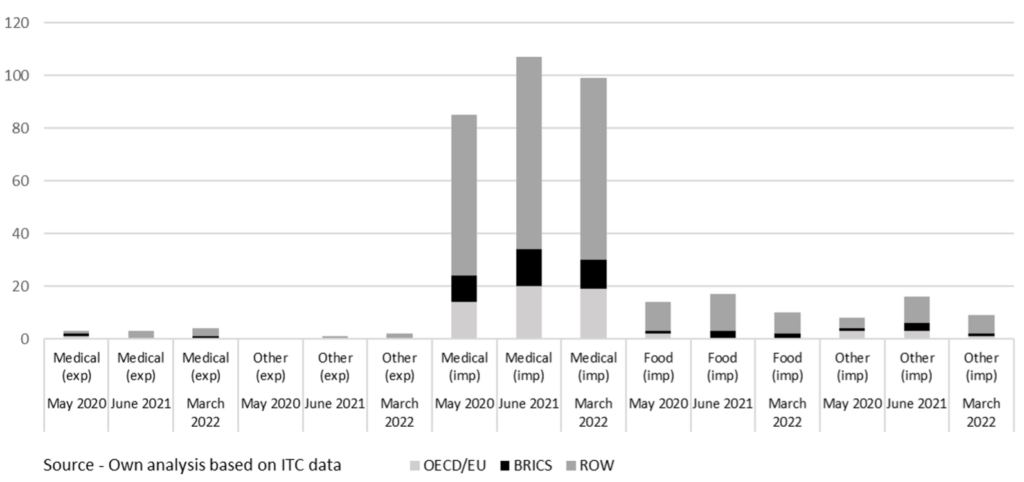Louise Curran (TBS), Laura Resmini (Unimib), Mara Grasseni (Unimib) and Simona Comi (Unimib)
The COVID-19 pandemic has been a profound crisis that has shaken the world in ways never seen before, disrupting social norms, transforming the business environment and hindering global commerce.
The TWIN SEEDS project gathered new data on how many governments tried to use trade policy to boost local production of essential goods between 2020 and 2022 and analysed how that affected GVC reconfiguration in Europe.
Governments also played an active role in trade during the crisis. Confronted with the scarcity of essential goods in the initial weeks and months, they swiftly implemented various trade policy measures, such as trade bans and export restrictions as well as trade facilitation and tariff reductions. By restricting firms' capacity to export and making imports cheaper, policymakers hoped to increase local supply. By early May 2020, the COVID-19 pandemic triggered trade restrictions in 90 countries. These measures were at odds with the principles of the WTO and went against the World Bank's recommendations on how to use trade policy to tackle COVID-19 (Figure 1). The success of these policy measures was muted, not least because they had contradictory effects: just as some markets were making imports cheaper, key producers were making goods more difficult to source. Although medical goods were often the key concern, exports of foodstuffs were also restricted by several countries (Figure 2). As vaccines started to emerge at the end of 2020, they became a further source of conflict, with several governments enacting direct and indirect restrictions on their trade.

Source: Authors’ own elaboration based on ICT data.

Source: Authors’ own elaboration based on ICT data.
The trade policies and companies’ strategies towards international cooperation also impacted the GVC reconfiguration in Europe. The reorganization of global production was influenced by the COVID-19 pandemic, but only to some extent. Most EU MNEs adopted a wait-and-see approach, meaning they have not altered much their pre-pandemic pattern of operations. However, when we consider where their country of origin interesting results emerge. In particular, MNEs located in the most affected regions of Central and Eastern Europe increased their overall share of foreign subsidiaries but at the same time reduced the share of subsidiaries located in Europe (except for the country of origin of the MNE). In contrast, MNEs headquartered in the most COVID-affected regions of Western Europe made a different choice, reducing the share of foreign subsidiaries, regardless of the location.
